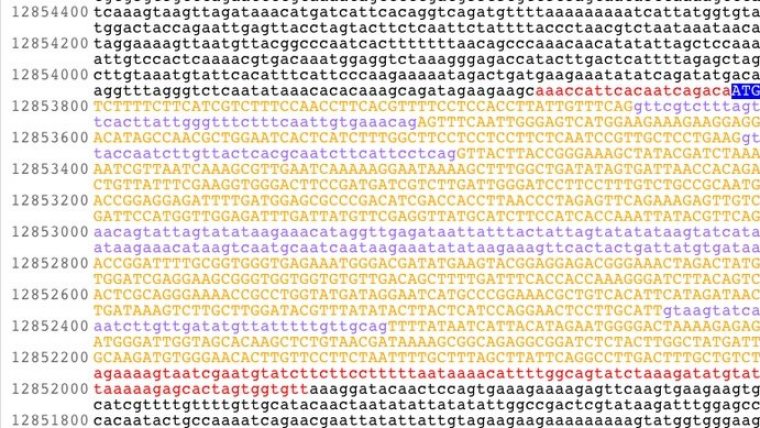| News / Science News |
Rare mutations reduce heart disease risk
NIH | JUNE 30, 2014
Researchers identified variations in a gene that are associated with lower triglyceride levels and a reduced risk of coronary heart disease. The findings may suggest new directions for development of therapeutics.

Genetic sequence in digital format. PD-USGOV-NSF.
Coronary heart disease is the leading cause of death in the United States. Levels of certain types of lipids (fats) that circulate throughout the body have been linked to heart disease risk.
For example, high levels of low-density lipoprotein (LDL) cholesterol are associated with a greater risk for heart disease. Conversely, high levels of high-density lipoprotein (HDL) cholesterol are associated with a lower risk of heart disease. High levels of triglycerides, another type of lipid in the blood, also may raise the risk of coronary heart disease.
A large team of researchers from Massachusetts General Hospital and Broad Institute explored the relationship among genetic mutations, plasma triglycerides, and coronary heart disease.
The team sequenced over 18,000 genes from participants of European or African ancestry who were enrolled in 7 large studies, including the Framingham Heart Study and the Women’s Health Initiative.
The researchers identified rare mutations (DNA sequence changes) in the gene encoding apolipoprotein C3 (APOC3) that were associated with lower plasma triglyceride levels. About 1 in 150 of the 3,734 study participants had at least 1 of 4 specific mutations that disrupt function in this gene. These participants had 39% lower triglyceride levels, 22% higher HDL cholesterol levels, 16% lower LDL cholesterol levels, and 46% lower circulating APOC3 levels compared to participants who did not have any of these genetic misspellings.
The team next evaluated the association between APOC3 mutations and the risk of coronary heart disease in about 111,000 participants of European, African, and Hispanic ancestry. They found that people who had at least 1 of the 4 mutations had a 40% lower risk of coronary heart disease than those who didn’t.
HDL and triglycerides are both correlated with heart attack, and have an inverse relationship with one another—the lower the HDL, the higher the triglycerides. It has long been presumed that low HDL is the causal factor in heart disease, and triglycerides are along for the ride. But the genetic data indicate that the true causal factor may not be HDL after all, but triglycerides.
YOU MAY ALSO LIKE




